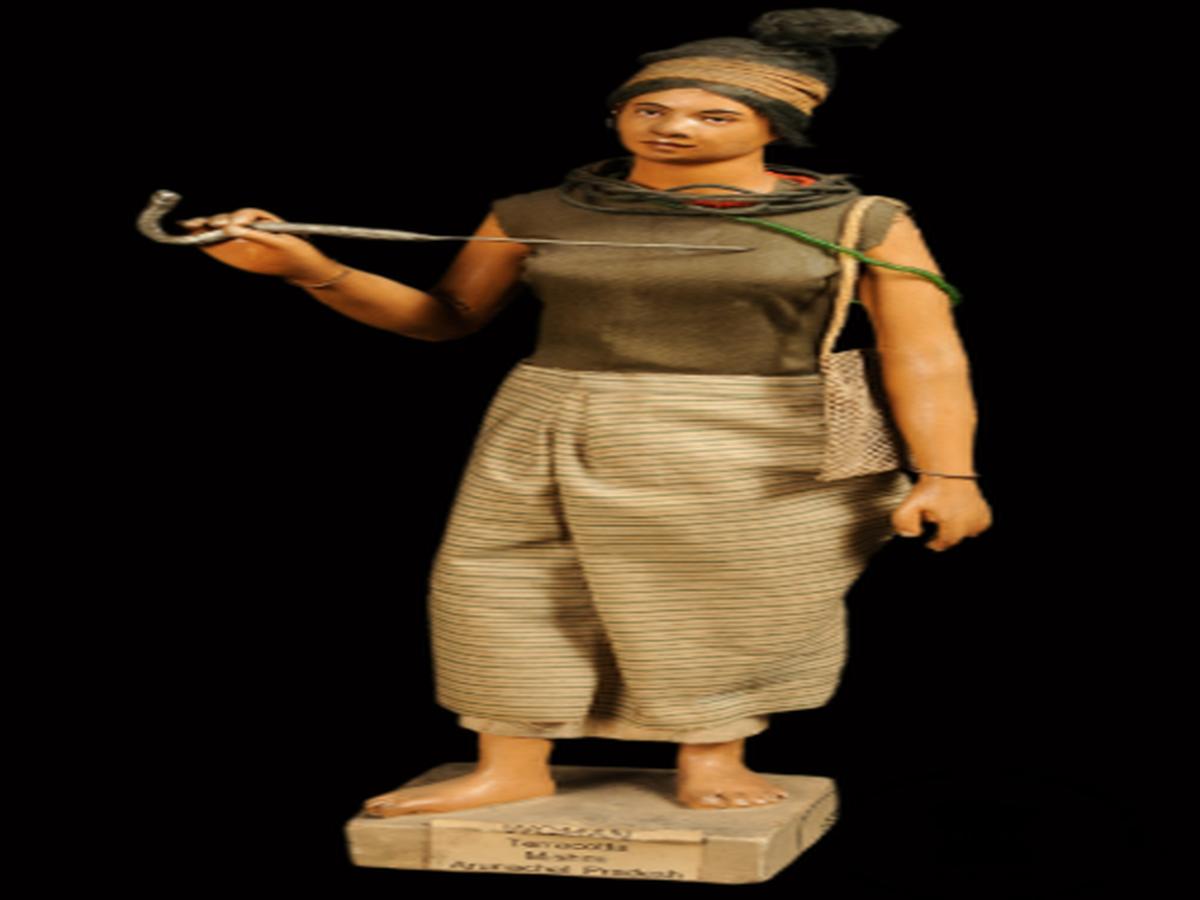State
Tribe Name
Art Type
short description
Terracotta clay representing beauty, design, and charm of traditional dress and cultural aesthetics of the Mishmi woman is displayed here. One of the principal tribes of eastern Arunachal Pradesh, the Mishmis are known for their rich customs and unique dress culture, which finds expression in their brilliantly decorated costume, adornments, and appliqu-work:
Thumbnail

Filter Postion
Left
Filter Background
Off
Theme
Filter Header Image

content
Image

description
Terracotta clay representing beauty, design, and charm of traditional dress and cultural aesthetics of the Mishmi woman is displayed here. One of the principal tribes of eastern Arunachal Pradesh, the Mishmis are known for their rich customs and unique dress culture, which finds expression in their brilliantly decorated costume, adornments, and appliqu-work:
The clay model is an expression of an elegantly dressed woman; she wears a sleeveless black blouse, so common a choice of dress among the Mishmi women, made from hand-woven textiles, and the lower part is a rare blue-striped knotted and tucked skirt. This headdress is tied up in a traditional topknot worn by the tribal women, but around it is wound a headband, which adds glamour to her, along with being a symbol of pride for her culture. This terrible beauty is ornamented with a couple of necklaces made of glass beads highly valued sociologically in tribal society. One necklace is made of red beads as a token for life and beauty, while the other is green for peace and prosperity. They serve as adornments, but also testify to social, cultural, and community significance. To sum up, this clay model portrays the concept of Mishmi womanhood, craftsmanship, and identity and becomes a powerful memory that highlights the richness and diversity of tribal life in Arunachal Pradesh.
The clay model is an expression of an elegantly dressed woman; she wears a sleeveless black blouse, so common a choice of dress among the Mishmi women, made from hand-woven textiles, and the lower part is a rare blue-striped knotted and tucked skirt. This headdress is tied up in a traditional topknot worn by the tribal women, but around it is wound a headband, which adds glamour to her, along with being a symbol of pride for her culture. This terrible beauty is ornamented with a couple of necklaces made of glass beads highly valued sociologically in tribal society. One necklace is made of red beads as a token for life and beauty, while the other is green for peace and prosperity. They serve as adornments, but also testify to social, cultural, and community significance. To sum up, this clay model portrays the concept of Mishmi womanhood, craftsmanship, and identity and becomes a powerful memory that highlights the richness and diversity of tribal life in Arunachal Pradesh.
Image Mode
landscape
promoted
On
Verified
Off
